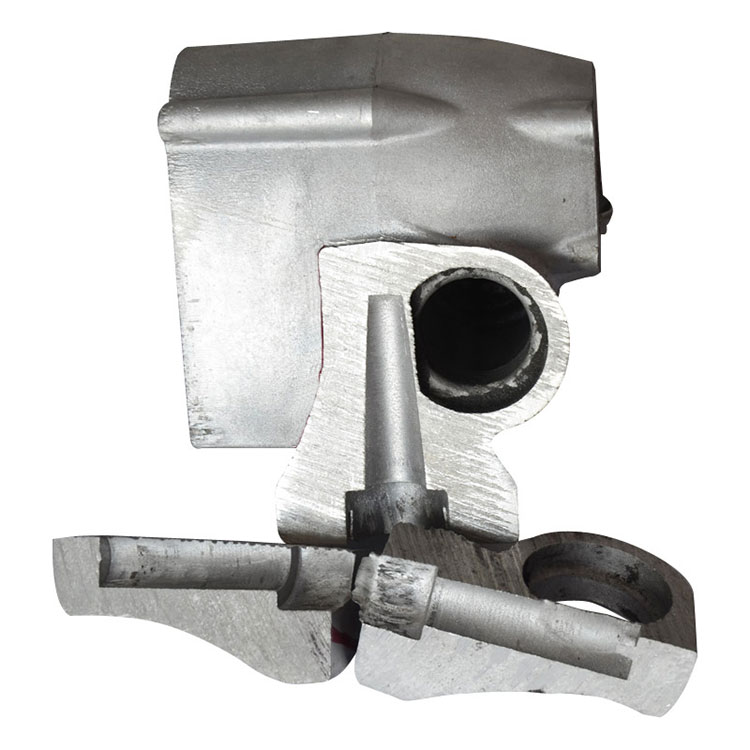1) Liquid penetrant testing
(aluminum casting)
Liquid penetrant testing
(aluminum casting) is used to inspect various opening defects on the surface of castings, such as surface cracks, surface pinholes and other defects that are difficult to find by naked eyes. The commonly used penetrant testing is dye testing, which is to wet or spray the colored (generally red) liquid (penetrant) with high permeability on the casting surface, infiltrate the penetrant into the opening defects, quickly wipe off the surface penetrant layer, and then spray the easy to dry display agent (also known as developer) on the casting surface, After the penetrant remaining in the opening defect is sucked out, the display agent is dyed, so as to reflect the shape, size and distribution of the defect. It should be pointed out that the accuracy of penetrant testing decreases with the increase of the surface roughness of the tested material, that is, the brighter the surface, the better the detection effect. The surface polished by the grinder has the highest detection accuracy, and even intergranular cracks can be detected. In addition to dye detection, fluorescent penetrant detection is also a common liquid penetrant detection method. It needs to be equipped with ultraviolet lamp for irradiation observation, and the detection sensitivity is higher than that of dye detection.
2) Eddy current testing
(aluminum casting)
Eddy current testing
(aluminum casting) is applicable to the inspection of defects less than 6 ~ 7mm deep below the surface. Eddy current testing is divided into two types: placement coil method and through coil method. When the test piece is placed near the coil with alternating current, the alternating magnetic field entering the test piece can induce eddy current (eddy current) flowing in the direction perpendicular to the excitation magnetic field in the test piece. The eddy current will produce a magnetic field opposite to the direction of the excitation magnetic field, partially reducing the original magnetic field in the coil, resulting in the change of coil impedance. If there are defects on the casting surface, the electrical characteristics of eddy current will be distorted to detect the existence of defects. The main disadvantage of eddy current testing is that it can not directly display the size and shape of the detected defects. Generally, it can only determine the surface position and depth of the defects. In addition, its detection sensitivity to small opening defects on the workpiece surface is not as sensitive as penetrant testing.


